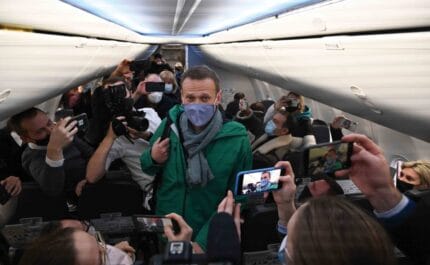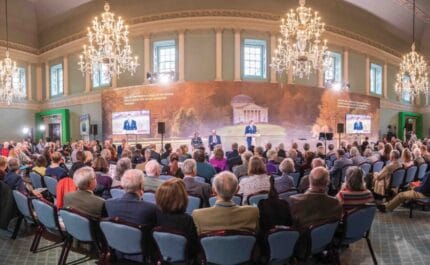Eleven days in May: 2. The storming of Al Aqsa
On 20th May 2021 a ceasefire was agreed between Hamas and Israel, marking the end of an 11-day war that cost hundreds of lives. We spoke to three Palestinians and three Israelis about the brief and bloody conflict to see why it arose, how the fighting unfolded and what happened next

Israeli troops take control of Al Aqsa mosque in Jerusalem on 7th May 2021. Photo: Mostafa Alkharouf/Anadolu Agency via Getty Images
20th May 2021 (Taken from: #43)
This is the second interview in a six-part series. See the other interviews here.
In early May, growing anger over the threatened Sheikh Jarrah evictions spilled over to the religiously sensitive Al Aqsa mosque complex in Jerusalem’s Old City, long a flashpoint for demonstrations. The mosque is considered sacred by Muslims, and is built on the Temple Mount, the sacred Jewish site of the Second Temple. On 7th May Israeli troops broke into the Al Aqsa complex after confronting stone-throwing Palestinian youths.
Ofer Zalzberg
Director of the Middle East programme at the Herbert C Kelman Institute

When Israeli troops moved into the Al Aqsa mosque complex, firing stun grenades and entering the mosque itself, the images shocked the Muslim world. The move was seen in the Palestinian territories of Gaza and the West Bank as an unconscionable provocation. But one of the key drivers towards that moment was a simple collision of holidays. This year the Islamic holy month of Ramadan coincided with several important Jewish holidays, meaning that large groups of worshippers from both faiths were in and around the same narrow streets of Jerusalem’s Old City at the same time. This, says Ofer Zalzberg, an Israeli academic and analyst based in Jerusalem, created a series of smaller confrontations which eventually careered out of control.
“Two Israeli police decisions taken on the first day of Ramadan, 12th April, seemingly triggered the chain,” Zalzberg explains. The first, he says, was when they erected barriers at the Old City’s Damascus Gate plaza that allowed Jews to reach the Western Wall more easily, but prevented Muslim families from gathering at their traditional spot to mark the beginning of Ramadan.
The second was a request by Israeli police to the Jerusalem Islamic Waqf, a body that controls the administrative affairs around the Al Aqsa complex, to turn off two speakers so that Muslim prayers would not be heard by Jews during Israel’s Memorial Day. When the Waqf refused, the police broke into the mosque and cut the speaker wires. “These micro-incidents and policies had this outsized effect because they took place in Jerusalem and specifically at Al Aqsa mosque,” says Zalzberg. “When you ask what distinguishes the Palestinian nation from other Arab nations, the most common answer I hear is: ‘We are the defenders of Al Aqsa.’ Palestinians yearn for cohesive unity. Jerusalem and Al Aqsa mosque are very effective mobilisers for this purpose.”
The Al Aqsa complex is the most sensitive and disputed piece of land in Jerusalem. Known as the Temple Mount to Jews and Haram al Sharif to Muslims, it contains both the Al Aqsa mosque and the golden-topped Dome of the Rock shrine. Israel has banned Jews from praying in the compound ever since capturing it in 1967. The site is so sensitive that the Israeli government decided that its day-to-day running should remain in Jordanian hands. But under the right-wing government of previous Israeli prime minister Benjamin Netanyahu, and with the acquiescence of former US president Donald Trump, Jewish prayer at the site has quietly been allowed, a move that was viewed as politically unthinkable even a few years ago. “Israel has made these changes on the ground, effecting a policy of tolerance towards low-profile, individual Jewish prayer [at the Temple Mount],” says Zalzberg. “This makes what was already a radical disagreement between them [Israel, the Palestinians and Jordan] even bigger. Within the Israeli government there is virtually no talk of walking that back, or even recognising that this was a central driver in the [May 2021] escalation.”
With each passing day of Ramadan, the protests grew. There was also outrage in Israel when a video of a Palestinian teen slapping two ultra-Orthodox Jews in the face was published on TikTok, prompting copycat attacks. Jewish protesters began gathering daily in the Old City to demand that police adequately protect Jewish worshippers.
Riots broke out on Temple Mount on Friday 7th May after Palestinian youths reportedly threw stones at Jewish worshippers. The police acted and entered the Al Aqsa compound and the mosque itself. That weekend saw escalating violence. But the biggest flashpoint was the convergence of two holidays on Sunday 9th May: Laylat al-Qadr, one of the holiest nights in Ramadan, and Jerusalem Day, when Israelis celebrate the anniversary of the capture of East Jerusalem in 1967. A Jerusalem Day parade was planned to be held the day after, which would pass through the Old City.
The anger on the streets was met by virtual silence from the Palestinian Authority (PA), which nominally controls the West Bank. Hamas decided to act. The military wing of the Islamic fundamentalist group, which controls Gaza, released a statement on 10th May stating that it was giving Israel “an ultimatum until 6pm to withdraw its soldiers from the blessed Al Aqsa mosque and from Sheikh Jarrah neighbourhood and to release detained Palestinians in the recent Jerusalem uprising, otherwise forewarned is forearmed.” The Jerusalem Day parade began as planned but had to be abandoned part way through when the bombardment from Gaza began
According to the Israeli Defense Forces (IDF), more than 200 rockets and mortars were fired towards Jerusalem and towns and cities in southern Israel that night. The new war had begun and Hamas had discovered increased support among Palestinians. “Hamas managed to become considerably more popular thanks to what happened in May, by being seen as those who come to the rescue,” says Zalzberg. “When Palestinians felt Al Aqsa was at risk, while nothing came from the Palestinian Authority in Ramallah, or at least seemingly nothing, it was Hamas who came in.”
Slow Journalism in your inbox, plus infographics, offers and more: sign up for the free DG newsletter. Sign me up
Thanks for signing up.








